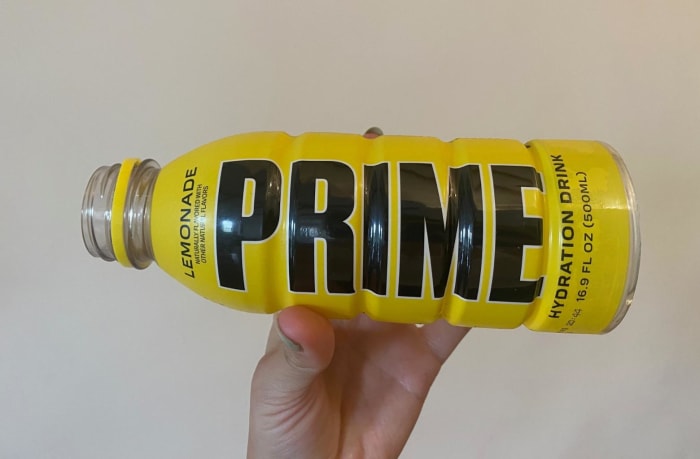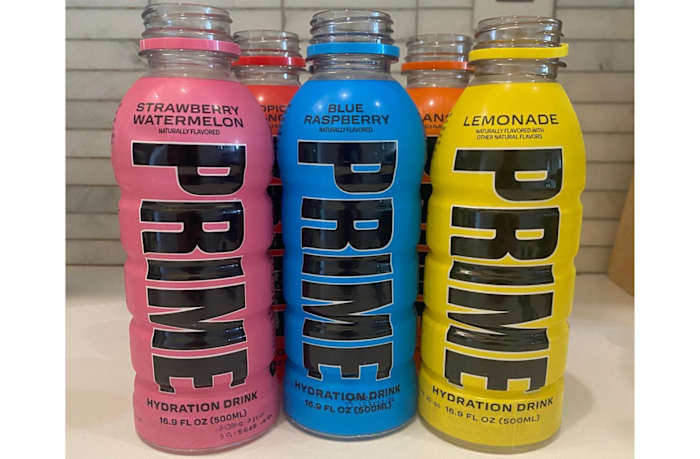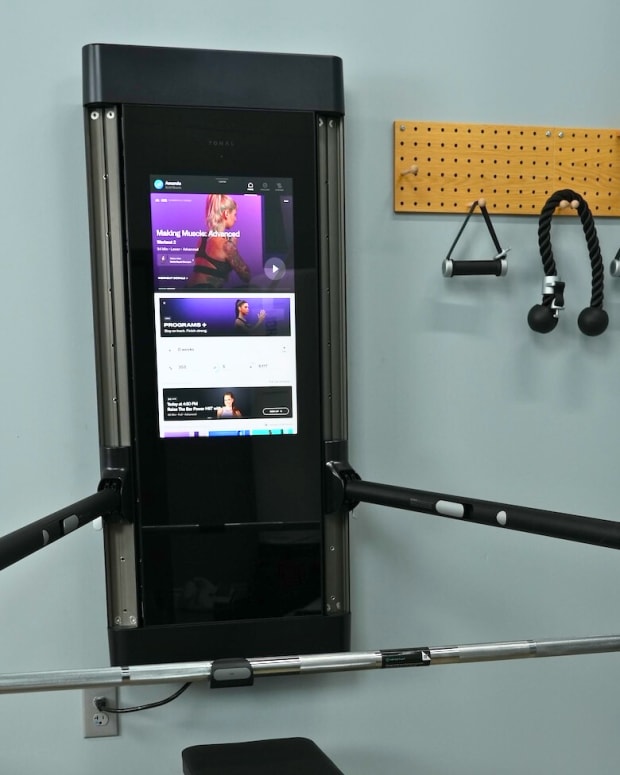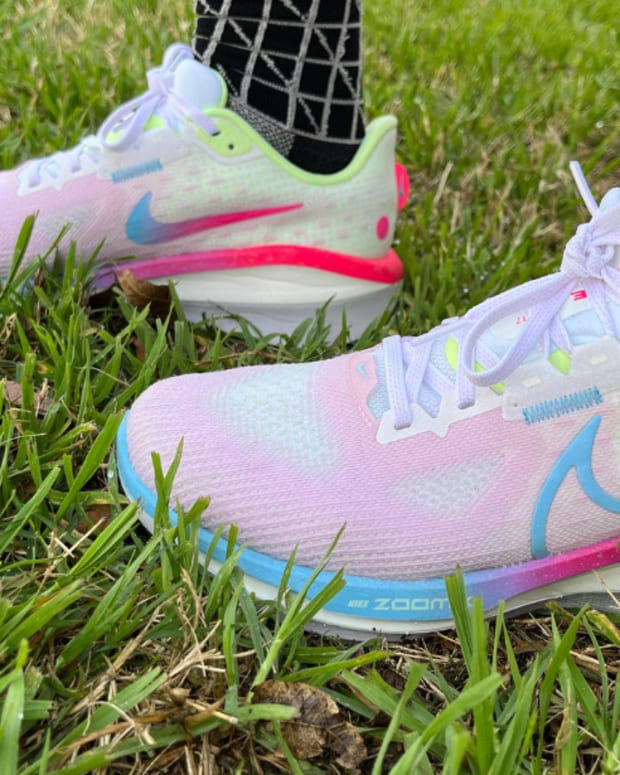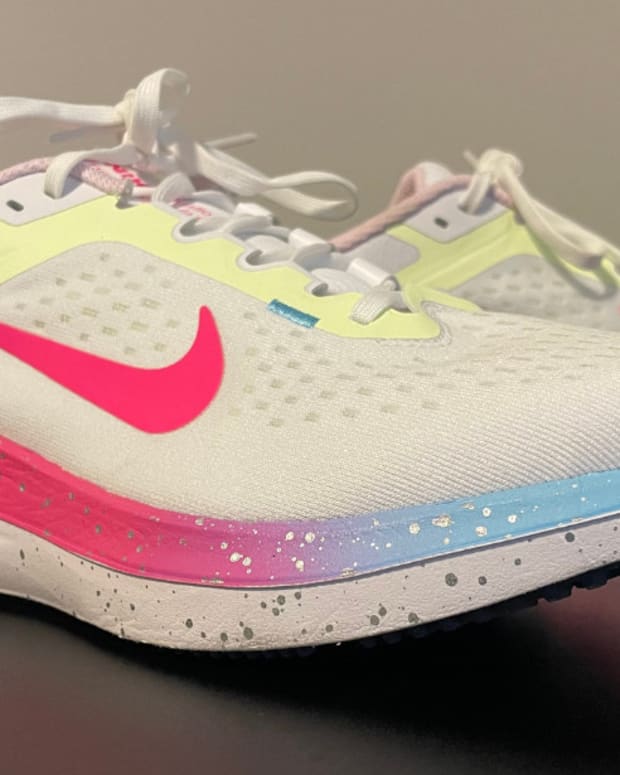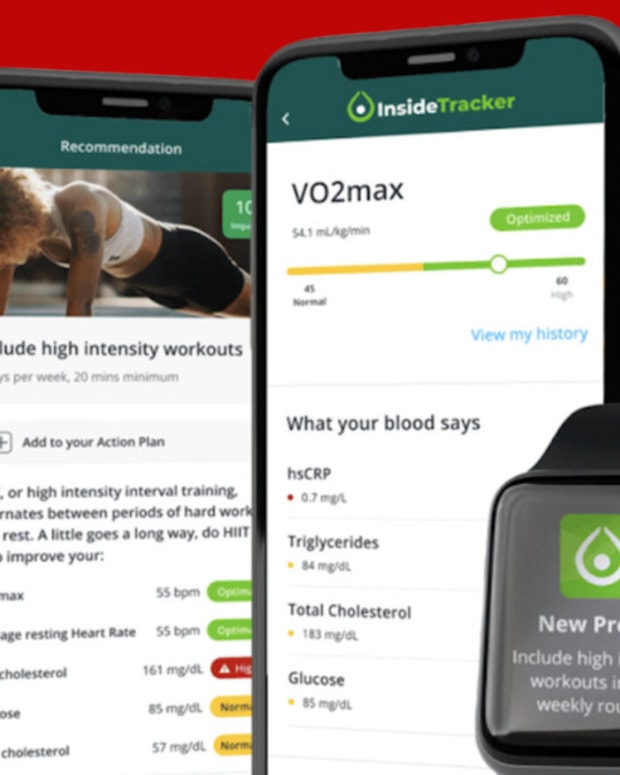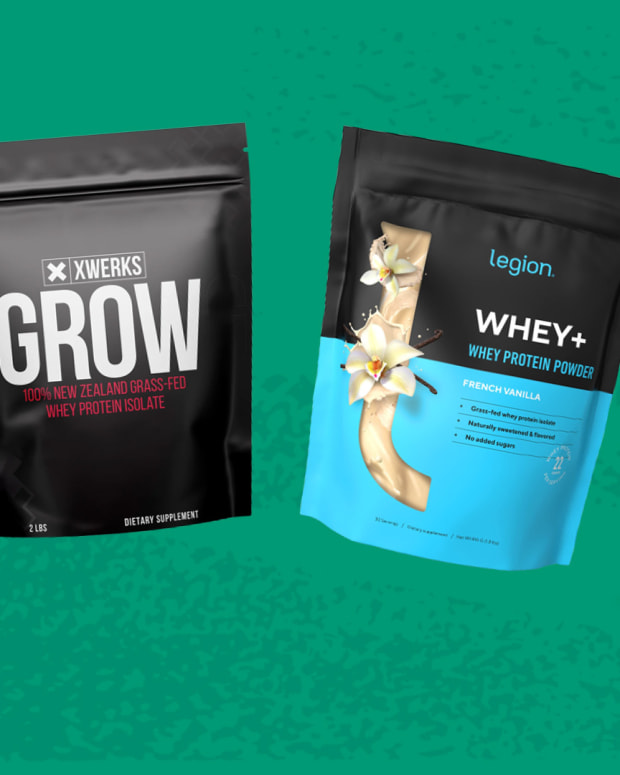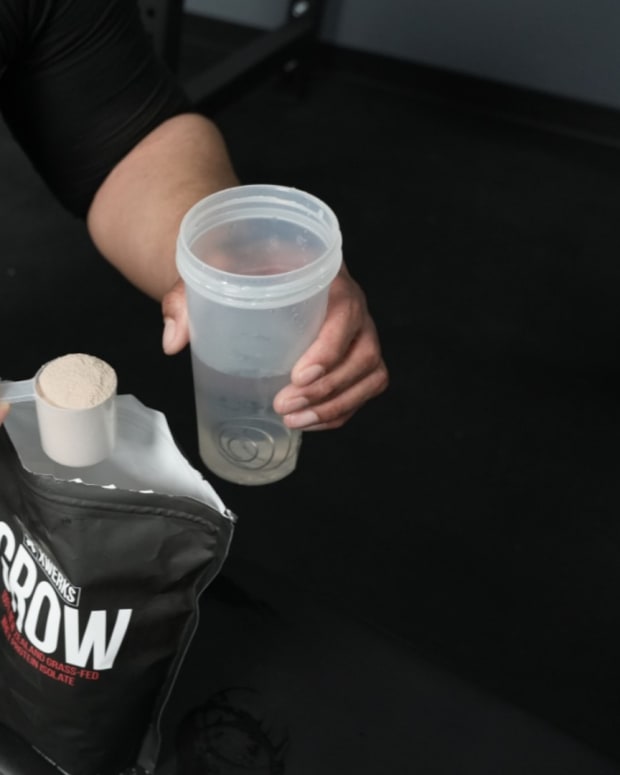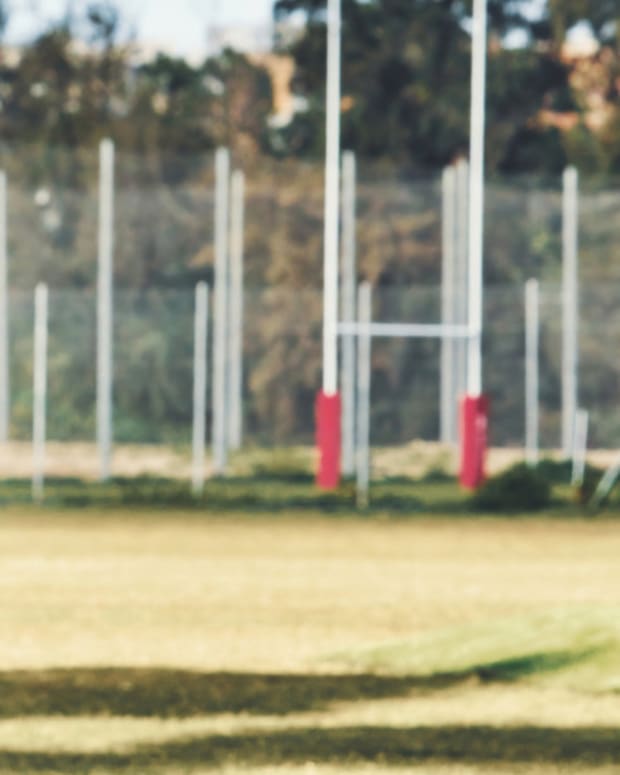The products featured in this article have been independently reviewed. When you buy something through the retail links on this page, we may earn commission at no cost to you, the reader. Sports Illustrated editorial staff are not involved in the creation of this content. Learn more here.
When you exercise, you sweat out more than just water. You also lose minerals that your body needs to function properly. To replace those vital nutrients, many turn to hydration drinks, which are fortified with essential vitamins and minerals.
Created by YouTube stars Logan Paul and KSI, PRIME Hydration Drink has quickly become one of the most popular hydration beverages on the market today. It’s now the official sports drink of the Ultimate Fighting Championship (UFC) and the British soccer team Arsenal. The YouTubers created the product to “fill the void where great taste meets function,” as stated on the bottles and product website.
There’s a lot of hype surrounding PRIME—I wanted to find out whether the drink lives up to it. For this review, I spent a week testing PRIME Hydration Drink. I sampled all nine flavors and drank a bottle to hydrate before workouts and to replenish after workouts. Below, you’ll find my thoughts on how this drink performed in regards to taste, hydration and recovery. I’ll also share advice from a dietitian, who evaluated the drink’s overall nutritional value and quality of its ingredients.
This content is meant to be informative, but should not be taken as medical advice. It is not intended for use as diagnosis, prevention or treatment of health problems. Always speak with your doctor before starting any new supplement or exercise regimen.
PRIME Drink At a Glance
- Coconut water is one of the primary ingredients
- Contains 100 percent of your daily value (DV) of vitamin A and vitamin E, and 200 percent of your DV of vitamin B6 and vitamin B12
- One or two grams of sugar per serving (depending on flavor)
- Five grams of carbs per serving
- 25 calories per serving
Pros
- Packed with vitamins and electrolytes
- Contains all three branched-chain amino acids (BCAAs)
- No added sugar
- Low in carbs
- Offered in nine flavors
- Vegan and gluten-free
Cons
- Flavors taste very sweet
- Uses artificial sweeteners sucralose and acesulfame potassium
- Not suitable for those allergic to coconut
PRIME Drink Claims
PRIME aims to “fill the void where great taste meets function.” This statement, along with a claim that it will “help you refresh, replenish and refuel” are found both on the bottle and the brand's website. The front of the bottle also states that the drink is naturally flavored, and it claims to have no added sugars. It is also labeled gluten-free and caffeine-free.
My Experience Testing PRIME
I received a variety pack of PRIME that had all nine flavors, which I’ll discuss more later in the review. I spent a week testing PRIME, drinking it before workouts, after workouts and one morning to rehydrate after having a few drinks the night before.
I’ll start by saying that I don’t have a sweet tooth. I might reach for some chocolate after dinner, but you won’t see me buying bags of gummy bears or sour straws. So to me, PRIME drinks tasted very sweet, almost like drinking candy. In my opinion, they tasted a lot sweeter than other hydration drinks I’ve tried, like Gatorade and Liquid IV. Each bottle of PRIME has between one and two grams of sugar, and contains artificial sweeteners which are much sweeter than sugar. One of the artificial sweeteners used in PRIME, sucralose, is 600 times sweeter than sugar.
When drinking PRIME after a workout, I had to make sure it was ice cold, which dulled the uber-sweet flavor. But when I drank PRIME to hydrate before a workout, I found it more tolerable, as I was drinking it in sips, rather than glugging it to rehydrate from a big sweat. I actually enjoyed PRIME the most when I drank it to recover after drinking a few alcoholic beverages the night before. There’s actually science behind what I experienced: Drinking alcohol lowers your blood sugar, which makes you more likely to crave sweets.
In terms of hydration, I do feel like it hydrated me well. I felt energized when I drank it before exercising, and didn’t notice myself feeling thirsty during the workout. I also found that following a workout, I felt replenished after finishing a bottle. But overall, if I was reaching for a hydration beverage for everyday use, my personal taste preference means I’d choose a less sweet option.
Quality of Ingredients
Coconut Water from Concentrate
The second ingredient after filtered water, PRIME is 10 percent coconut water from concentrate. Coconut water naturally contains potassium, magnesium and sodium, which the body needs after excreting these minerals through exercise. “I'm actually impressed by the use of coconut water as one of its primary ingredients. I haven't seen many sports beverages on the market formulated like that,” says Samantha Coogan, M.S., R.D.N., a program director in nutrition and dietetics at the University of Nevada, Las Vegas.
Related Post: Does Drinking Water Help You Lose Weight?
Trimagnesium Citrate
Trimagnesium citrate is a magnesium salt made of magnesium and citric acid. It’s often used as a supplement to treat magnesium deficiency, and research shows that it’s a highly bioavailable form of magnesium. PRIME contains 124 milligrams of magnesium, which is 30 percent of your DV. While you’re not getting 100 percent of your DV of magnesium from this drink alone, there are plenty of magnesium-rich foods, like spinach, pumpkin seeds and avocado that can help you hit your goal.
L-Isoleucine
L-Isoleucine is one of the essential BCAAs. It is used to make hemoglobin and helps regulate blood sugar. While PRIME doesn’t state how much L-Isoleucine is in the drink, it says it contains 250 mg of BCAAs in total; there are three BCAAs in this drink, so the amount of L-Isoleucine is some fraction of that number.
Studies have shown that BCAAs, unlike other essential amino acids, are metabolized in skeletal muscle, and therefore may help reduce skeletal muscle damage after exercise. However, the amount in PRIME is not enough to produce these results. A study published in The Journal of the International Society of Sports Nutrition found that BCAAs reduced muscle damage when taken in two 10-gram doses per day. You’d need to supplement PRIME with other foods high in BCAAs, like meat, milk and chickpeas, to see such results.
L-Leucine
L-Leucine is another BCAA, and is used for protein synthesis. It also plays a role in muscle regeneration and metabolism. PRIME doesn’t not list the exact amount of this BCAA either, but since there are 250 milligrams of BCAAs in total, we can infer it’s somewhere below that number.
L-Valine
L-Valine is the last of the BCAAs in this drink, and that means PRIME has all three BCAAs. L-Valine helps grow muscles and repair tissues. Again, there is somewhere below 250 milligrams of it in this drink. Some studies show that BCAAs help reduce muscle soreness following exercise, so that may be a benefit to drinking PRIME following a workout. Though there is no set recommended daily value of BCAAs, studies have shown that taking 20 grams per day shows positive results for muscle recovery. PRIME has far less than that, so, as mentioned above, you’d need to supplement.
D-Alpha Tocopheryl Acetate (Vitamin E)
This synthetic form of vitamin E is often found in supplements and skincare products. It’s an ideal form of the vitamin, as it’s easily absorbed by the body. Vitamin E is a fat-soluble vitamin and functions as an antioxidant. This means it helps fight off free radicals, which can damage cells. PRIME contains 15 milligrams of vitamin E per serving, which is 100 percent of your Daily Value.
Retinyl Palmitate (Vitamin A)
Retinyl palmitate is a bioavailable form of vitamin A, which is a fat-soluble vitamin that the body needs for healthy eyes, skin, bones and more. PRIME contains 900 mcg of vitamin A, which is 100 percent of your Daily Value.
Pyridoxine Hydrochloride (Vitamin B6)
Pyridoxine hydrochloride is a common synthetic form of vitamin B6 that is often used to treat deficiencies, as well as nausea that occurs during pregnancy. Vitamin B6 helps the brain function optimally and also plays a role in the health of the immune and nervous systems. PRIME contains 3.4 milligrams of this vitamin, which is 200 percent of your DV.
Cyanocobalamin (Vitamin B12)
Cyanocobalamin is a synthetic version of vitamin B12 that’s often used to treat B12-related anemia (B12 deficiency). This essential B vitamin helps the body make red blood cells and plays an important role in proper functioning of the immune system. Vitamin B12 is commonly found in animal products like poultry, meat and fish, but is rarer in plant foods. PRIME has 4.8 mcg of this vitamin, which is 200 percent of your Daily Value. This means it could be an ideal supplement for those on a plant-based diet looking to hit their B12 goal.
Other ingredients
PRIME also contains filtered water, dipotassium phosphate, acesulfame potassium, citric acid, natural flavor, fruit and vegetable juice (for color) and sucralose. The two forms of potassium provide a total of 700 milligrams, which is 15 percent of your Daily Value. The body needs potassium to regulate blood pressure and contract muscles. However, these forms of potassium are artificial sweeteners. A study in the journal Cell showed that artificial sweeteners can affect gut bacteria and impede the body’s ability to regulate glucose levels.
Citric acid is one of the main ingredients in PRIME, and is a commonly used preservative. It’s recognized as safe by the Food and Drug Administration (FDA), but may have a negative effect on tooth enamel if consumed in excess. Consumers may also want to note that natural flavors, while generally considered safe, are not 100 percent natural. Regulations allow natural flavors to contain fillers and preservatives, as long as the flavor itself is derived from an animal or plant source.
Nutrition Facts
| Calories | Protein (grams) | Carbs (grams) | Fat (grams) | Sugar (grams) |
|---|---|---|---|---|
25 | 0 | 5 | 0 | 2 |
PRIME has just 25 calories per serving, which is low compared to similar hydration drinks like Gatorade and Powerade. It has five grams of carbs per serving, and two grams of sugar (though some flavors have only one gram of sugar).
Coogan notes that the low-carb profile is something that some consumers will want to take note of. “Endurance athletes should be mindful as carbohydrates are key to endurance training (before, during and after training), and PRIME may not be the best option to help with carbohydrate replenishment compared to something like Gatorade. Of course, carb replenishment should also come from whole foods, but PRIME contains a very small serving for immediate replenishment,” she says.
Related Post: Coffee vs Pre-Workout: Which is Better for Your Gains?
PRIME Drink Flavors
PRIME is currently offered in nine flavors: Ice Pop, Strawberry Watermelon, Lemon Lime, Blue Raspberry, Tropical Punch, Meta Moon, Orange and Lemonade. My favorite flavors were Strawberry Watermelon and Lemonade.
PRIME Drink Cost and Where To Buy
On the brand’s website, PRIME Hydration Drink costs $29.99 for a 12-pack, or about $2.50 per bottle, at the time of writing. It’s sold in-store at GNC, 7-Eleven, Walmart, Sam’s Club, DICK’s Sporting Goods and The Vitamin Shoppe locations nationwide. PRIME can also be purchased online on The Vitamin Shoppe and GNC websites for the same price listed on PRIME’s site. PRIME is also available for purchase on Amazon where prices vary.
Compared to similar products like Gatorade, which goes for around $20 a 12-pack (depending where you buy) or Liquid IV, which costs about $25 for 16 hydration packets, PRIME is on the pricier side. Whether you’re willing to pay a bit more for PRIME will depend on your goals. PRIME contains BCAAs, which some studies show help promote muscle recovery. If you’re looking to build muscle, PRIME may be worth the extra cost. However, if it’s simply hydration you’re after, you’d likely be better off sticking with a cheaper option.
Who Should Use PRIME Drink
PRIME is safe for most adults, as long as they don’t have a coconut allergy. I’d recommend it for those who have a sweet tooth, as all the flavors taste quite sweet. It’s also a good option for anyone who works out in the evening, as it is caffeine-free. It’s also vegan and gluten-free.
Coogan recommends it as a good choice for athletes. “PRIME could be a great addition to other fluids for power and endurance athletes. The amino acid profile is especially intriguing and might reduce GI distress if athletes are able to reduce their supplement intake and get it in one place,” she says.
Who Should NOT Use PRIME Drink
As one of its main ingredients is coconut water, anyone with a coconut allergy should avoid PRIME. Coogan warns that it’s not safe for children, who have “an increased risk for vitamin toxicity due to the large amount of vitamin A,” she says. PRIME may not also be right for anyone with gastrointestinal (GI) issues, as sucralose can exacerbate them, Coogan advises. And in my opinion, anyone who doesn’t like sweet flavors will likely want to look elsewhere.
What Customers Are Saying About PRIME Drink
Reviews are not published on PRIME’s website at the time of writing, but there are a number of customer reviews available on Amazon and GNC and The Vitamin Shoppe websites. At the time of writing, PRIME is rated 4.7/5 stars on GNC with 381 ratings, between 4.6 and 5/5 stars at The Vitamin Shoppe (depending on flavor) and about 4.5/5 stars on Amazon (depending on the seller).
A common theme among reviewers is that they bought PRIME for either their children or grandchildren. Purchasers commented that kids love the product. “My grandson loves every one of the flavors and it seems better for you than Gatorade,” wrote one Amazon reviewer. However, a number of customers complained about the price, remarking that PRIME is quite expensive per bottle. Overall, most customers were satisfied with their purchase, with many praising the drink’s tasty flavors.
About PRIME Drink
PRIME was founded by famous YouTubers Logan Paul and KSI, who were opponents before becoming business partners. According to PRIME’s site, the product was created “to showcase what happens when rivals come together as brothers and business partners to fill the void where great taste meets function.” Essentially, the creators say they saw a gap in the market for a sports drink that delivers more than just hydration.
PRIME is produced by the parent company Congo Brands, which is also the parent company of Alani Nu and 3D Energy. Congo Brands is based in Louisville, Kentucky. PRIME Hydration was first released in January 2022, and in September of that year they introduced PRIME Hydration+ Sticks, which are packets of hydration powder. In 2024, PRIME Energy, the brand’s energy drink offering, came out. Consumers will want to note that the FDA is currently investigating PRIME Energy after complaints were made about its high caffeine content (200 milligrams per serving).
All PRIME products are gluten-free, vegan and soy-free. PRIME Energy is certified Kosher, and PRIME Hydration and Hydration+ Sticks are in the process of certification. And while PRIME products are not certified Halal, the brand states on its website that its products, “do not constitute any ingredients or manufacturing processes that would require such certification.”
PRIME vs. Gatorade
Gatorade is a hydration drink that has been around for decades and comes in 22 flavors. It has 140 calories, 36 grams of carbs and 34 grams of sugar per serving. This makes it considerably higher sugar and calorie than PRIME, which has just 25 calories per serving and two or less grams of sugar per serving. According to Coogan, “Compared to Gatorade, PRIME boasts a higher micronutrient profile. For example, PRIME has almost 10 times the amount of potassium compared to the same serving of Gatorade, along with vitamins A, E, B6, B12 and magnesium. PRIME also has a nice amino acid profile as well. This might help someone avoid having to take additional supplements, such as BCAAs.” However, Gatorade is considerably cheaper than PRIME, with 12-packs selling on Amazon for $14.49 at the time of writing.
PRIME vs. Liquid IV
Liquid IV is an electrolyte powder that just needs water to become a hydration drink. It has 45 calories, 11 grams of carbs and 11 grams of sugar per serving—all these amounts are higher than what you find in PRIME. Liquid IV also has 500 milligrams of sodium per serving, which is considerably more than PRIME, which has just 10 milligrams. The last notable nutritional difference between these drinks is that PRIME contains BCAAs, while Liquid IV does not, making PRIME a better choice for those seeking a more complete nutritional profile. In terms of price, Liquid IV is cheaper than PRIME, costing $1.56/serving to PRIME’s $2.50/serving. But similar to PRIME, Liquid IV comes in nine flavor options.
Prime Drink FAQs
Is PRIME healthier than gatorade?
According to Coogan, yes. It has a higher micronutrient profile and contains BCAAs, which Gatorade does not. She also notes that the first two ingredients (nutrition label ingredients are listed in order of amount) of PRIME are water and coconut water, while Gatorade’s are water and sugar. Coogan regards coconut water as a healthier choice than sugar.
How much caffeine is in PRIME?
PRIME Hydration Drink does not contain any caffeine. However, PRIME Energy, the brand’s energy drink offering, contains 200 milligrams of caffeine per serving.
Can kids drink PRIME?
According to Coogan, PRIME isn’t the best option for kids. PRIME has 900 mcg of vitamin A per serving, and According to the National Institutes of Health, the recommended amount of vitamin A for children ages one to three is 300 mcg, 400 mcg for kids four to eight, and 600 mcg for kids nine to 13. “Vitamin A is a fat-soluble vitamin, and a toxicity could lead to nausea, vomiting, blurred vision, dry/cracked skin, mouth ulcers, jaundice and respiratory infections. To be safe, I might recommend finding alternative beverages formulated specifically for kids, such as Pedialyte,” says Coogan.
Is PRIME drink FDA-approved?
Yes, PRIME Hydration Drink has been FDA-approved.
Does PRIME drink hydrate you?
According to Coogan, PRIME is hydrating, thanks to its electrolyte profile, but she advises that other electrolytes would need to be supplemented. “It has an excellent amount of potassium, but appears to be lacking in sodium, which is a key electrolyte that must be replaced when exercising. It's actually one of the first sports beverages I've seen without sodium, something Gatorade has a hearty serving of. Electrolyte replenishment is all about balance, and sodium and potassium balance each other,” she says.
Takeaway: Is PRIME Drink Worth Trying?
If you’re looking for a low-sugar hydration drink that packs in a lot of vitamins, electrolytes and BCAAs, then I’d say PRIME is worth trying. You’ll want to keep in mind that it is a bit more expensive than other similar hydration drinks, like Gatorade and Liquid IV. And personally, I found the drink too sweet for my taste, but hundreds of customers online loved the flavors.
These statements have not been evaluated by the Food and Drug Administration. This product is not intended to diagnose, treat, cure, or prevent any diseases.
Prices are accurate and items in stock as of publish time.

